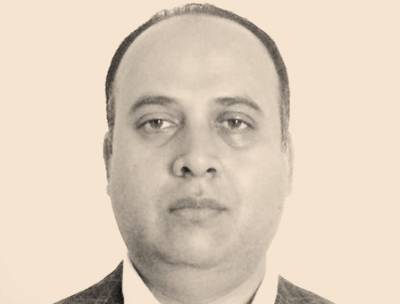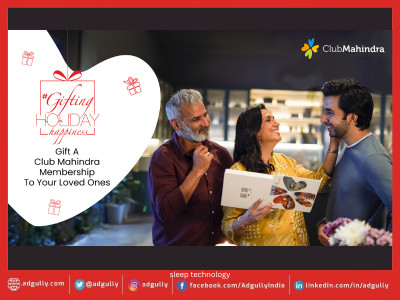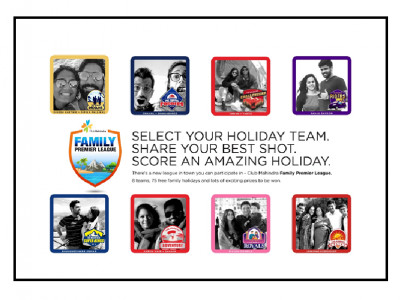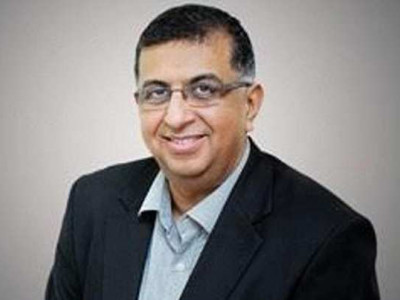We’ve kind of been off the radar for about 3-4 years: Giridhar Seetharam
Club Mahindra, the flagship brand of Mahindra Holidays & Resorts India has been instrumental in creating magical memories for families across the country with a lifetime of unique holiday experiences at its resorts across India for the past 20 years, endeavouring to bring families closer together.
This is especially relevant in today’s day and age, when the Indian family unit is slowly but surely losing its cohesiveness. Long working hours, daily stress and increasing connectivity are all coalescing to ensure that the family is slowly becoming an archipelago of independent islands. As expectations rise and work increasingly encroaches into family life, the home becomes just a space for cohabitation rather than bonding and togetherness. As per a recent U&A study undertaken by Club Mahindra amongst its members, the respondents saw vacations as an opportunity for the entire family to relax and strengthen family bonds through shared moments of fun, laughter and happiness.
These findings formed the insight for Club Mahindra’s new brand campaign which centres around the family and reinforces the importance of regular vacations to encourage closeness. With this campaign, Club Mahindra is making an attempt to transform the Indian holidaying behaviour – to prioritise taking holidays; from being just another postpone-able leisure activity to a regimen, a commitment to one’s family. The campaign is based on the central idea of the family breadwinner who is torn between working hard to provide for his family and spending quality time with them. It also probes the relationship between parents and children and highlights the fact that parents can rediscover the child in themselves when they become friends with their children, thereby also bringing them closer to each other as a family.
The campaign seeks to convey this message through various scenarios showcasing the fact that value is not always counted in terms of money but also in terms of memories with loved ones.Unlike others in the category, this campaign is not about luxury or food or services.
In conversation with Adgully, Giridhar Seetharam, CMO, Mahindra Holidays, speaks about the campaign insight, marketing strategy, holidaying behaviour of Indians, focus areas for growth and more. Excerpts:
What is the insight behind the latest campaign by Mahindra Holidays?
We kind of have been off the radar for about 3-4 years. The last campaign we did was in 2012. So I think it is a very much back to basics so to say. We did a lot of engagements with both prospects and members to try and understand where they are coming from, what is happening, what are some of the barriers, what will drive them to adopt us better. Putting together all the feedback helped us define our core consumers in a very cogent manner – families with children in the age group of 0-12 years, they are the ones who are risk-averse and look at comfort or aided exploration. Our study brought forth a few dynamics. One fact is that pretty much in all families, especially in larger cities, the members are virtually like three islands in the house – father island, mother island and the child island. These three groups actually come together during a holiday and a lot of magic happens. Therefore, holidays are becoming a way or means for people to come together and bond with their families.
Therefore, we felt that we could be the platform to bring these people together. Our ad campaign encapsulates the journey of parents bonding with their children by abandoning their inhibitions or mobiles and work load and bringing out their inner child.
Thus, there are two things that are going on. The first is the whole transformation of the parents when they start bonding with their children during vacations. Secondly, we are trying to showcase that these kind of bonding experiences can only happen at Club Mahindra and nowhere else.
How much of a toll has increasing work pressure and career ambitions taken on holidaying among Indians? A study by Expedia states that about 40% Indians do not go on vacations due to their work schedule.
Absolutely right. What it says is that Indians are the fourth worst deprived holidayers in the world. I think it’s a combination of two things – one is the fact that we are a very saving-conscious culture as opposed to a spending-conscious culture. Second, I think, is our work environment, where people feel that if they go on holidays, they will be considered being non-serious about their work.
Thus, as a category leader our biggest challenge is to get people to start holidaying better and that vacation ownership is possibly a fantastic opportunity to do that. It forces one to take a regimented holiday and people don’t have to worry about the cost factor – once you have made the initial payment, all you need to do is book your tickets in advance. I think as leaders, the onus is on us to drive this thing – the whole relevance of what people get out of holidays.
How much of a focus is there on the smaller markets or is it completely a metro phenomenon?
I don’t think it’s a metro phenomenon anymore, which comprises Delhi, Mumbai, Kolkata, Chennai, and Bangalore. In fact, our big growths are coming from Tier I and II towns. The second level towns are where we are seeing excitement and anticipation. We have a two-pronged approach for these markets – the first is to engage with our own members in these places to try and drive word of mouth. The second is using technology to try and get people to experience our resorts by means of augmented reality. We have created 3D visuals of our resorts by using drones, etc., to give people a realistic feel of our resorts.
What about the pricing?
We have four levels of pricing depending on which season you holiday in. The highest level is called Purple, where the price range is between Rs 7 lakh and Rs 17 lakh. The lowest range is Blue, which is in the range of about Rs 2.5 lakh and Rs 5 lakh. What we are seeing is that people take the Blue package and then go on to upgrade it later as their economic situation progresses.
How has the performance & growth of Mahindra Holidays & Resorts India been in 2016? How much of an impact will demonetisation have on the company in Q3 FY2017?
Luckily for us, demonetisation has had very minimal impact. We had a very good November and we are still having a very good December. For us, the value of transactions is high and everything is anyway either through credit card or cheque.
While I am not at liberty to talk about Q3 or Q4, we had a good first half, where we grew roughly 10 per cent which is on a high base of last year. Last year was possibly the best of the 20 years that we have existed. Last year we grew almost at 20-22 per cent vis-a-vis a CAGR of 20 per cent. This year has also been good.
While international tourism has been impacted by the demonetisation, what about domestic tourism?
Anywhere that involves cash transactions or last minute bookings, has been impacted. I think people have cut down on bookings now and are considering postponing their holidays. But I don’t think longer planned holidays have been impacted as much.
What are some key trends to watch out for in travel and tourism in 2017?
The first is that increasingly people are moving away from just breakfast and dinner places and want to have experiences. They want value-adds within the resorts and while going to the resorts. People don’t just want to go somewhere, eat and come back. They want to immerse in local culture, have authentic local experiences. Secondly, a large number of people are moving both their exploration and booking to the digital world. They are using both the web and mobile to know more about a place it is, read reviews, transact, etc.
What are the focus areas for Mahindra holidays in 2017?
Our push is on two fronts. First is around acquisition or recruitment – as we call it – and the digital drive will help us significantly in doing that. Our advantage vis-a-vis other brands is that we have a captive base of 200,000-odd people whom we can leverage. So, there’s a lot of activities that we will be doing around those 200,000 people and try and make them spokespersons and ambassadors for our brand.
However, the disadvantage that we have had in the past is that we have been inconsistent in our communication. The biggest effort in 2017 will be to remain consistently visible to the consumers.

















Share
Facebook
YouTube
Tweet
Twitter
LinkedIn